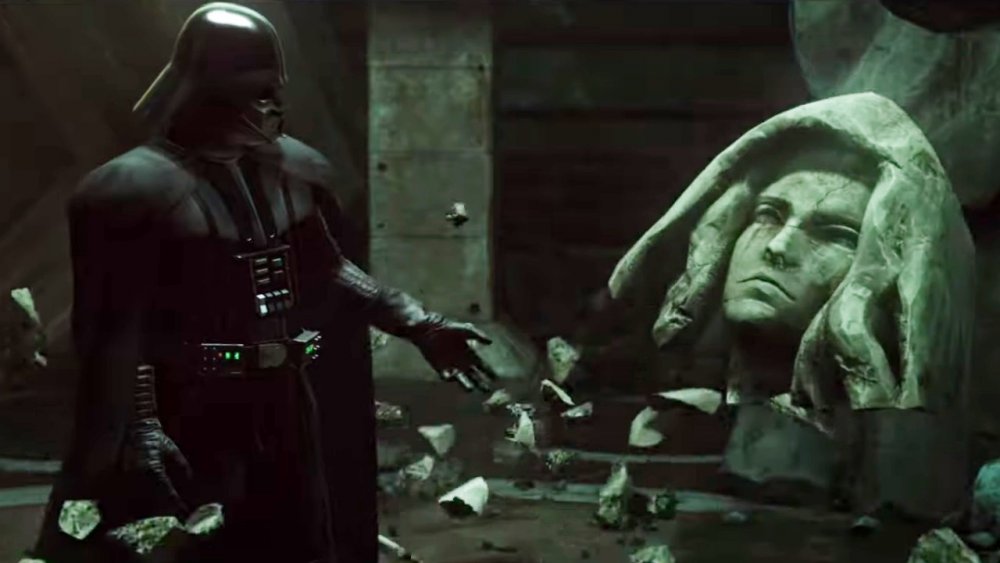The Rise Of Skywalker Visited Mustafar And We All Missed It
In case you missed it — like most everyone did — Star Wars: The Rise of Skywalker revisited one of the galaxy far, far away's most iconic locations.
The opening scene, in which Kylo Ren mounts an assault on a mysterious cult in search of Darth Vader's Wayfinder, takes place on the planet Mustafar, which has a long and decidedly dark history in Star Wars lore. (via ScreenRant)
Although the planet's vegetation is starting to grow back when seen in Rise of Skywalker, sharp-eyed viewers noticed that this appears to be a fairly recent development. Indeed, the planet had long been under a curse which rendered it practically uninhabitable, its surface a volcanic hellscape flowing with molten lava.
It was here, in Star Wars: Revenge of the Sith, that Anakin Skywalker seemingly lost the last shred of his humanity in an epic duel with his former Master Obi-Wan Kenobi. Of course, being burnt to a crisp and losing all of his limbs (and almost his life) wasn't enough to keep the former Jedi from eventually fulfilling his destiny of bringing balance to the Force, but it was a pretty rocky road. Anakin was rescued from the surface of Mustafar by Darth Sidious, AKA Emperor Palpatine, whose intervention transformed him into the black-clad, sweet-helmeted, heavy-breathing terror known as Darth Vader.
The planet's appearance in Revenge of the Sith was the first chronologically, but in later works, its backstory would be filled in to give it a dark and foreboding history. Chief among these works: Vader Immortal, the 2019 VR game that explains just what happened to the once-lush planet, and how Kylo knew to find what he was looking for there.
How did Mustafar become cursed?
In case you haven't played Vader Immortal but have it on your list (as you should), be advised that spoilers follow. The game's narrative reveals that Mustafar was once home to a Force-sensitive named Lady Corvax and her husband, who lived in harmony with the native population. The husband, a warrior known as the Black Bishop, was killed in battle — a development which Corvax was unable to accept.
She stole the Mustafarians' most sacred artifact: the Bright Star (which may or may not have been a Kyber crystal) with the intention of using it to bring the Black Bishop back to life. It worked, to an extent — Bishop returned, but was caught between worlds. The most notable effect her theft had, though, was on the planet itself. The energy released when Corvax used it for her ill-advised purpose devastated the planet's surface, transforming it into the wasteland we saw in Revenge of the Sith.
Some time after Vader's loss to Kenobi — the year 0 BBY, in fact, the year in which Star Wars: A New Hope takes place — Vader had a castle built on the planet, making it his home. Some time during the events of the original trilogy, Vader Immortal revealed that he had attempted (with assistance from a descendant of Corvax) to use the Bright Star to bring his dead wife Padme Amidala back to life, but the attempt failed, and the Bright Star was destroyed. Its destruction broke the dark curse gripping the planet, and slowly, its ecosystem began to reset itself.
It is in the midst of this recovery that we caught up with Mustafar in Rise of Skywalker, and those dudes that Kylo laid a whipping on in that opening sequence were actually Sith cultists sworn to protect the ruins of Vader's castle and its artifacts. It just so happened that Kylo had a use for one of those artifacts — the Wayfinder — and he wasn't in the mood to let a bunch of Vader worshipers get in his way.

